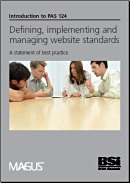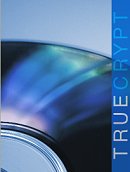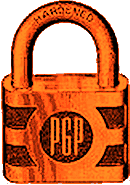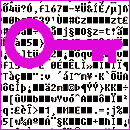![]() This year’s eyeforpharma eMarketing conference took place in Zürich. Apart from Zürich being a wonderful place to be, the conference was well worth attending. It was particularly interesting to see how all of big pharma is getting prepared to cope with the challenges ahead, and what role eMarketing plays in the process. Continue reading
This year’s eyeforpharma eMarketing conference took place in Zürich. Apart from Zürich being a wonderful place to be, the conference was well worth attending. It was particularly interesting to see how all of big pharma is getting prepared to cope with the challenges ahead, and what role eMarketing plays in the process. Continue reading
All posts by Webvet
XP Service Pack 3
![]() MS finally released Win XP SP3. Windows Update didn’t work, probably too many downlaods are attempted from this server. Download SP3 at Microsoft’s Download Center and install manually.
MS finally released Win XP SP3. Windows Update didn’t work, probably too many downlaods are attempted from this server. Download SP3 at Microsoft’s Download Center and install manually.
Website standards
 In April 2008, the British Standards Institute has published PAS 124, a best practice approach to implementing, maintaining, and managing standards compliant websites. PAS 124 helps organizations deploy web site standards. So if you are involved with the planning or building of web sites, this document is a must read. Being one of my focus areas, website standards are part of my daily work. As a member of the review panel for PAS 124 I got my hands on the document very early, and I have been using it ever since. Continue reading
In April 2008, the British Standards Institute has published PAS 124, a best practice approach to implementing, maintaining, and managing standards compliant websites. PAS 124 helps organizations deploy web site standards. So if you are involved with the planning or building of web sites, this document is a must read. Being one of my focus areas, website standards are part of my daily work. As a member of the review panel for PAS 124 I got my hands on the document very early, and I have been using it ever since. Continue reading
Salat aus dem Frühbeet
 Der erste Kopfsalat is geerntet. Es geht nichts über einen knackfrischen Salat aus dem eigenen Garten. Das Frühbeet haben wir dieses Jahr recht spät aufgestellt. In früheren Jahren kam bereits im März Frühbeet-Salat auf den Tisch. Das einzige Ärgernis sind die vielen Schnecken, die irgendwie in den Kasten eindringen können. Aber dafür gibt es ja die Bierfalle. Continue reading
Der erste Kopfsalat is geerntet. Es geht nichts über einen knackfrischen Salat aus dem eigenen Garten. Das Frühbeet haben wir dieses Jahr recht spät aufgestellt. In früheren Jahren kam bereits im März Frühbeet-Salat auf den Tisch. Das einzige Ärgernis sind die vielen Schnecken, die irgendwie in den Kasten eindringen können. Aber dafür gibt es ja die Bierfalle. Continue reading
Free encryption software (3)
Hard disc encryption
 [Update Nov. 11, 2014: The Truecrypt developers no longer support this product]
[Update Nov. 11, 2014: The Truecrypt developers no longer support this product]
Since version 5, released on February 8, 2008, Truecrypt can encrypt an entire drive or partition, including the one that contains the operating system installation. Truecrypt’s implementation of strong drive encryption is particularly impressive. Listen to Security Now episode 133 for more information. Finally high quality free open source software is available for encrypting an entire hard disk. I immediately encrypted my Laptop’s hard disk. Continue reading
Free encryption software (2)
File encryption on USB flash drives
 I am a PGP user since 1996 and I still use Ståle Schumacher’s international DOS version 2.63i to encrypt files on my USB flash drives. All I need is PGP’s small exectutable file (pgp.exe, 237.737 kb). On first use, PGP will create a second small file that contains some random seed data for the encryption. With this minimal setup, PGP will warn you about a missing configuration file, but this does not affect the strength of encryption. The USB drive on my key ring contains an encrypted passwords file and pgp.exe, providing easy access to the many cryptic passwords I use. All I need is one strong master pass phrase to decrypt the file and get instant access to more passwords than I could ever remember.
I am a PGP user since 1996 and I still use Ståle Schumacher’s international DOS version 2.63i to encrypt files on my USB flash drives. All I need is PGP’s small exectutable file (pgp.exe, 237.737 kb). On first use, PGP will create a second small file that contains some random seed data for the encryption. With this minimal setup, PGP will warn you about a missing configuration file, but this does not affect the strength of encryption. The USB drive on my key ring contains an encrypted passwords file and pgp.exe, providing easy access to the many cryptic passwords I use. All I need is one strong master pass phrase to decrypt the file and get instant access to more passwords than I could ever remember.
I insert the USB drive and open a command prompt window (Start > Run > cmd).
PGP file encryption:
pgp -c filename
PGP file decryption:
pgp filename.pgp
In conventional -c encryption mode PGP uses a symmetric block encryption algorithm (IDEA) with a key size of 128 bits. Together with a good pass phrase this is really strong encryption.
Don’t forget to securely delete the plaintext file afterwards:
pgp -w filename
Since this version of PGP was developed for DOS, it only supports 8 character file names (8.3).
PGP 2.63i is still available from Ståle’s pgpi.org site [download].
Back in 1996 I contributed the “self-sign FAQ” to the PGP community.
Other Flash drive encrytion options for Windows, Mac and Linux
Many different free and commercial PGP versions and clones are available. See pgp.com, pgpi.org, and gnupg.org. I still use PGP 2.63i because it is an easy-to-use lightweight program that provides strong encryption and can be put on any device by simply copying one small file.
Truecrypt in “Traveller Mode” can be used to create an encrypted file container on Flash memory. Truecrypt is free and provides super strong encryption, too. However, you need to have administrator privileges on all machines that you decrypt the container on. I’m not an admin on my machine at work but need access to the passwords on my keyring there, too.
Some USB drives (SanDisk, Kingston, IronKey) have hardware encryption built in, but when it comes to encryption, I prefer to stay away from proprietary implementations.
Free encryption software (1): Introduction
Free encryption software (3): Hard disc encryption
Free encryption software (4): GNU Privacy Guard
The mobile web (2)
 If a mobile device provides a good browsing experience, users will use it to access the web. This statement is clearly supported by Net Applications’ operating system market share data for devices accessing the web in February 2008. Apple’s iPhone outperformed Windows mobile (CE) devices more than 2 times. Continue reading
If a mobile device provides a good browsing experience, users will use it to access the web. This statement is clearly supported by Net Applications’ operating system market share data for devices accessing the web in February 2008. Apple’s iPhone outperformed Windows mobile (CE) devices more than 2 times. Continue reading
Free encryption software (1)
 All data on my laptop’s hard drive is encrypted. If the machine gets stolen, no one will be able to boot the operating system without entering the correct pass phrase beforehand. Nothing on the drive looks like a file of has any readable information. My letters, photos, and all other private information are no more than an cryptic stream of random bytes. Continue reading
All data on my laptop’s hard drive is encrypted. If the machine gets stolen, no one will be able to boot the operating system without entering the correct pass phrase beforehand. Nothing on the drive looks like a file of has any readable information. My letters, photos, and all other private information are no more than an cryptic stream of random bytes. Continue reading
The mobile Web (1)
![]() Most mobile phones have some sort of Internet access built in. However, not many owners of mobile devices use them to surf the web. There are several obvious reasons. First of all, carriers still charge too much for internet access. The WWW user experience on mobile phones is variable, to say the least. Access fees will go down, and I am sure that mobile flat rates will be the predominant pricing model soon. It will take some time though until most mobile phones belong to the 3rd generation and until mobile web standards are sufficiently well defined and implemented to support consistent web page rendering on the mobile web. Continue reading
Most mobile phones have some sort of Internet access built in. However, not many owners of mobile devices use them to surf the web. There are several obvious reasons. First of all, carriers still charge too much for internet access. The WWW user experience on mobile phones is variable, to say the least. Access fees will go down, and I am sure that mobile flat rates will be the predominant pricing model soon. It will take some time though until most mobile phones belong to the 3rd generation and until mobile web standards are sufficiently well defined and implemented to support consistent web page rendering on the mobile web. Continue reading
